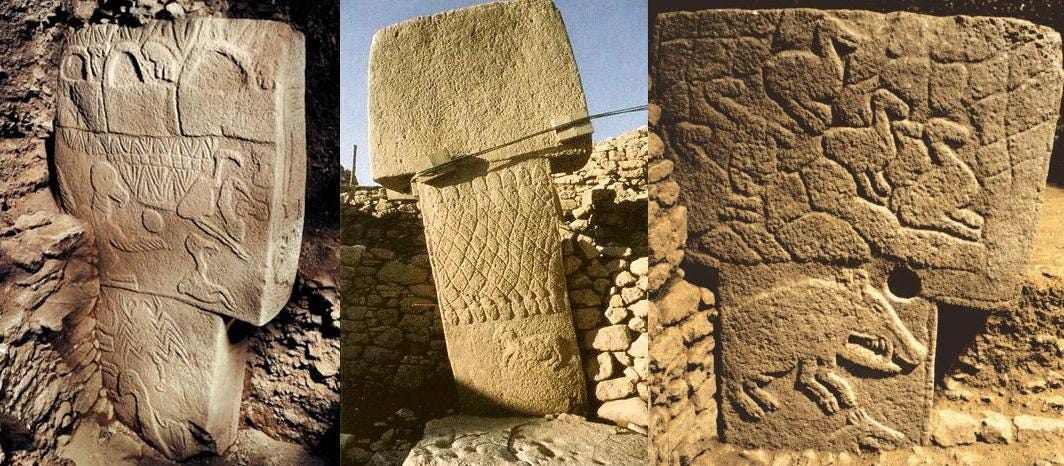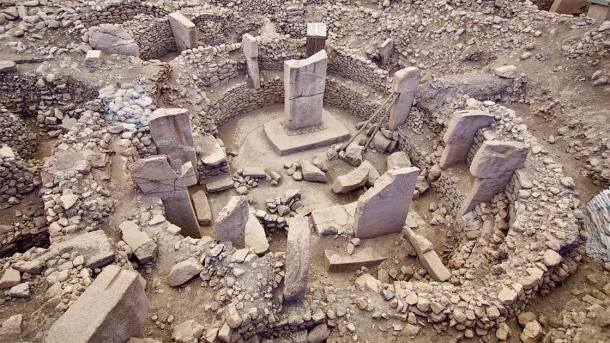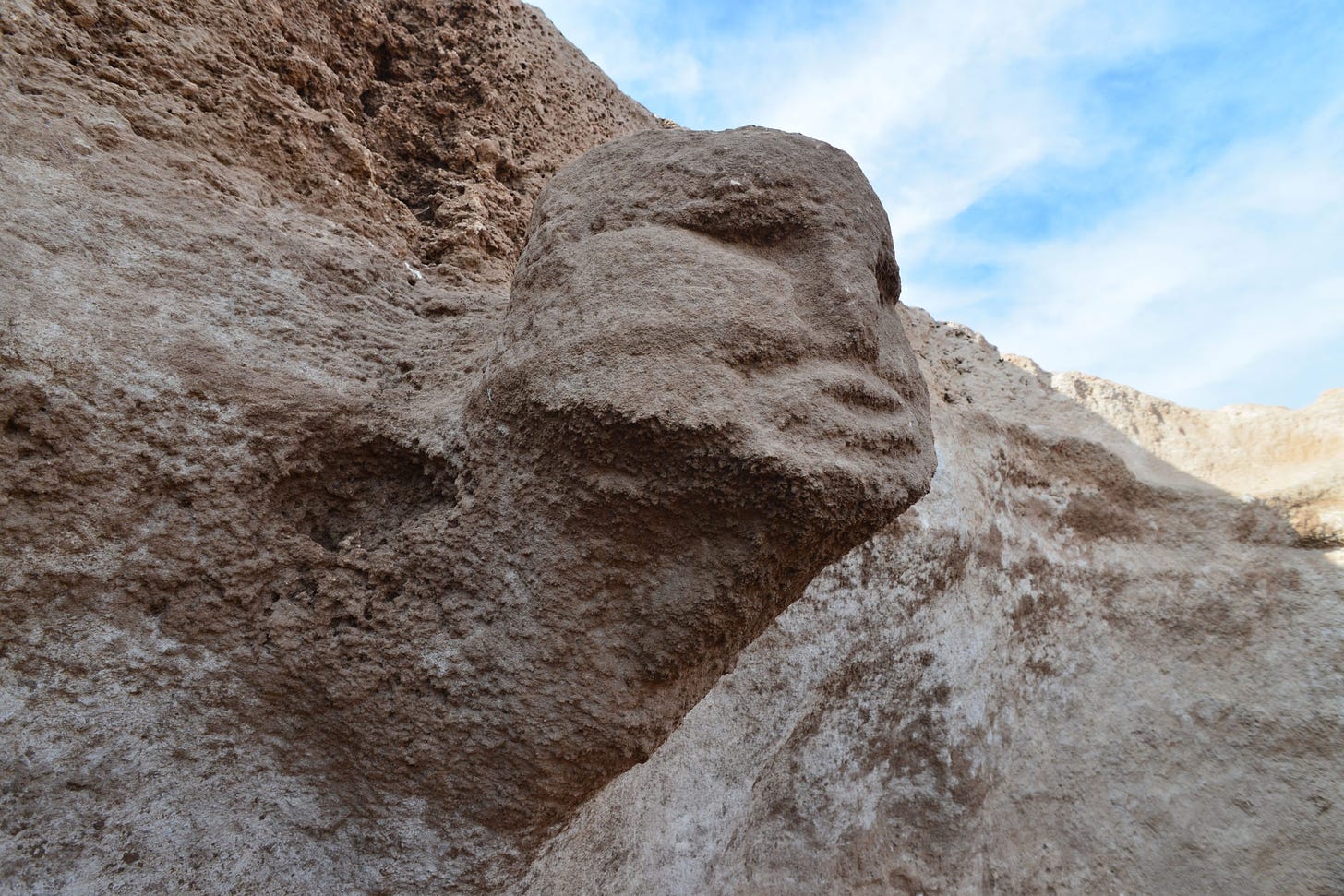Karahan Tepe and Gobekli Tepe prove conspiracy theories to be correct again
Recent discoveries from Ancient Turkey
Everyone has heard of the Great Sphinx of Giza. This mythical creature with a human head on a lion’s body has been carved out of limestone and bedrock in the Giza Plateau.
Conventional archaeology claims that, whilst the sculpture is the oldest in Egypt, it was only carved around 2500 BC. However, many scientists believe it is much older. Some think it was built to face the constellation of Leo during the vernal equinox, approximately 10,500 BC, whilst others claim weathering of the limestone indicates an equally ancient timescale.
For context, Stonehenge in the UK is approximately 5,000 years old and until recently, the oldest megalithic monument was found in Malta and thought to be from around 3,500 BC.
Robert Schoch believes the core part of the sphinx must date back to at least 5,000 BC, with his more recent estimates at 10,000 BC. This is due to the water weathering and erosion on the sphinx which could only have been caused by weather last seen in the area towards the end of the last ice age.
This does not fit in with the current archaeological and historical narrative and so these theories are called pseudoarchaeology or conspiracy theories. How could hunter gatherers produce these monuments? The Neolithic revolution, when agriculture started to appear, supposedly began approximately 10,000 years ago but it was not until between 4000-3000 BC that more sophisticated cultures were meant to have emerged. The status quo was that there was no way ancient temples and megaliths could have been constructed until the advent of agricultural societies. Societies which were able to feed architects and builders whilst they undertook their jobs without worrying about their next meal.
However, as with many conspiracy theories these days, they were ridiculed by conventional scientists until the evidence became too overwhelming to deny.
The rest of this article is available as an early read for paid subscribers only. My articles take a lot of time to research and write so your support is very much appreciated and will ensure that I can continue to produce the same quality and quantity of articles going forwards.
One piece of evidence was discovered in 1995 when Professor Klaus Schmidt began excavating Gobekli Tepe in south-eastern Turkey. The year before, a Kurdish shepherd had stumbled across a large stone and the news quickly spread until it reached Professor Schmidt.
Previous ancient discoveries around the world had always been rubbished because of the claim of sample contamination causing carbon dating to be inaccurate. Subsequent civilisations trampling on or modifying sites makes carbon dating very difficult to verify. Gobekli Tepe removed the scope for this criticism due to one of the strange things about this ancient site, it had been purposefully and carefully buried. This meant everything was almost perfectly preserved and there certainly hadn’t been any contamination. Carbon dating estimated the site was built around 10,000 BC, if not earlier, and then intentionally buried 8,000 BC.
At first it was claimed that the site was buried naturally over time, but this was refuted, firstly because the site is on the top of a mountain and so sediment is unlikely to accumulate upwards and secondly, because the infill was loose, rather than compacted, which also meant it was much easier to excavate.
Gradually the evidence became too strong to deny - a group of people, circa 10,000 BC had created ancient temples and carved megaliths weighing tens of tonnes.
However, those who control the narrative don’t like it to be changed so quickly. To the proponents of the old narrative, this did not suggest a cultured civilisation, lost to history but now rediscovered. It still must have been hunter gatherers expressing their spiritual side. Instead of complex civilisations arising once agricultural societies had been established, the new narrative was that the building of spiritual sites led to agricultural societies developing.
This just does not make sense. How would hunter gatherers set aside enough time to develop architectural and craftsman skills if they were still reliant on obtaining food relatively frequently? Moreover, this wasn’t one architect and a builder scavenging food from the rest of the hunter gatherers, this was hundreds if not thousands of people dedicating months and years to building complicated structures. Surely this could only take place in an agricultural society where food could be provided to the workers, leaving them all their time to focus on construction?
One reason given for Gobekli Tepe being constructed by hunter gatherers was that no human remains or dwellings could be found at the site. However, only 1-5% of the site has actually been excavated so perhaps they just haven’t found any yet.
As before, going against the new narrative was called pseudoarchaeology or conspiracy theory. Complex civilisation just had not been around that long, no arguments, Gobekli Tepe was just a random, unique site, an anomaly.
Recently however, new evidence came to light which again proved the conspiracy theories to be true. This time from a site called Karahan Tepe, only 30 miles away from Gobekli Tepe. It had been discovered in 1997 but only recently excavated in the last two years.
To date, around 250 obelisks have been found in Karahan Tepe. What makes Karahan Tepe so interesting is that it is actually older than Gobekli Tepe and the site was purposefully buried as well. Furthermore, even though only 1% of the site has been excavated so far, homes have been found, showing that the builders all lived and worked at the site.
At Karahan Tepe, archaeologists have discovered intricately carved statues and T-shaped obelisks with similar carvings of animals as seen in Gobekli Tepe. Large serpents are carved into the rock, decorating rooms, obelisks and pathways. The head below is cut into the bedrock and protrudes outwards.
Structures such as an amphitheatre, carved out of the bedrock, have been discovered, which connect to shrine rooms with large pillars. Some of these are carved from the rock but others have been cemented into place. It has been suggested that these are phallic symbols and indeed many of the human carvings hold their hands on or over their penises.
What we can be certain about is that we have much to discover about human history. It is foolish to pretend otherwise and to protect false narratives. New discoveries are being discovered at Karahan Tepe and Gobekli Tepe almost daily, which may give us new insights into how human civilisation developed.
This has just been an overview of the two Turkish sites showing how it is counter-intuitive to call alternative theories conspiracy theories. Humans will discover and achieve far more if all credible theories are discussed and then put to the test. Supressing information and discrediting people with alternative ideas is always going to send us backwards. Often, as with the discoveries above, the conspiracy theories actually turn out to be true.
However, Karahan Tepe and Gobekli Tepe contain many mysteries that we currently have no answers for. Many of the carvings at both sites are of figures with six fingers. Were the builders a tribe of six fingered humans? Where did the people from that time learn their skills? Did they come from an even older civilisation that we are yet to discover? Or one that we have already discovered but does not fit the narrative? Why were the sites intentionally buried? Was it to preserve the sites as a time capsule, to be discovered at a later date? If so, why? Was there a message that they wanted to send to the future? A warning? Something that could not be conveyed with a writing system that would likely be unreadable. Or did a new religion come along and the old one had to be removed? If so, why was the site not destroyed instead of carefully preserved?









Is there anything more corrupt, or more corruptible, than Science? If we have learned anything in the past 2 years it should be that those who claim to be the authoritative voice for all things Scientific are merely unrepentant liars. They are, in short, using Science to control others. It was ever thus. We cannot even exempt the church, God forbid. And if we cannot exempt the church we cannot exempt the world. The enemy of Science is the Father of Lies. When the root is corrupted the branch soon follows. When the process is corrupt the result cannot be otherwise. But there is an antidote. Darkness cannot penetrate Light, but Light can penetrate darkness.
There is also the curious case of "Minnesota Man", which is actually the skeleton of a young woman, found during a road building project in Minnesota in 1938. Three things stand out: the sediment she was found in would have been laid down by a glacial melting period approximately 20,000 years ago, except no humans are supposed to have been in the Americas before 14,000 years ago; she was wearing the finery of a high culture trading across long distances; and rather than the roundish facial structure of the mongol steppe associated with modern American Indians, her bone structure was more of the African continent.
But of course that all is inconvenient, so she is simply said by the State and Science to be 10,000 years old and that is that.